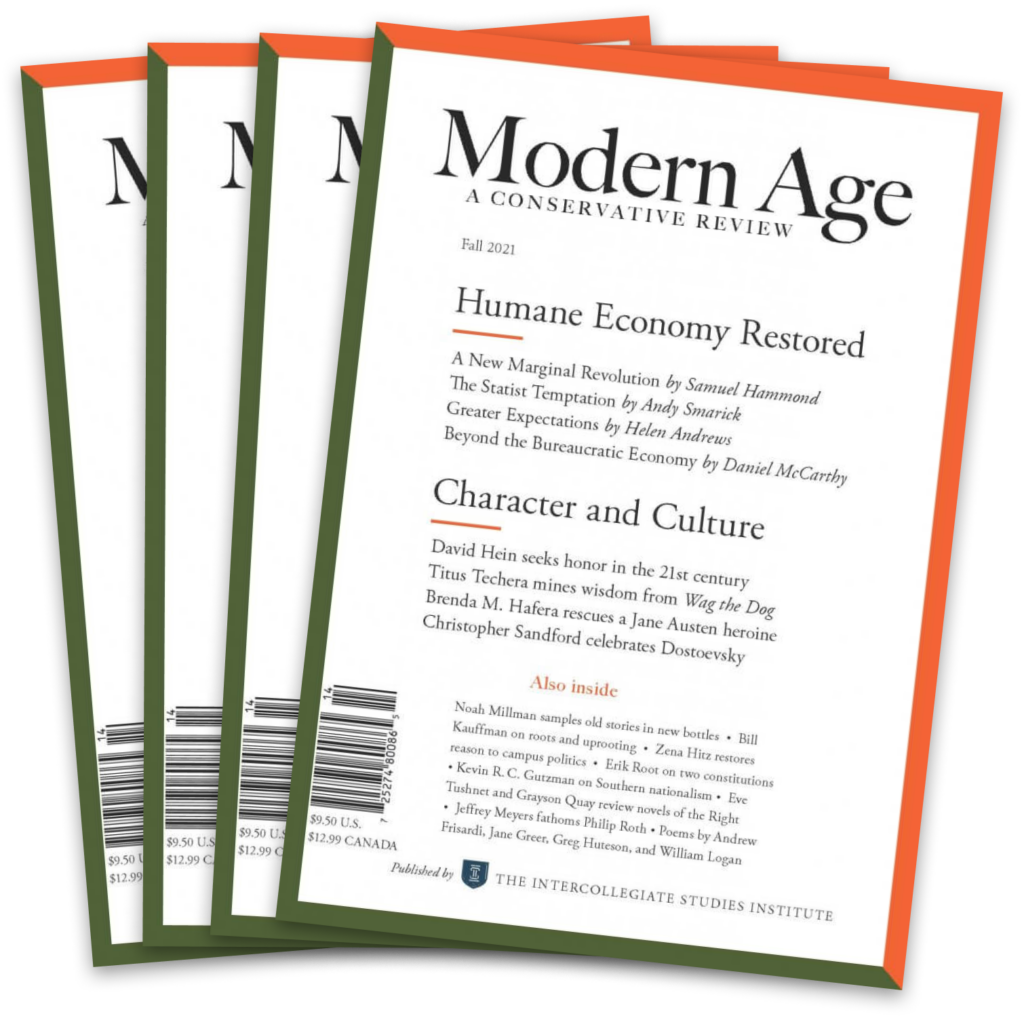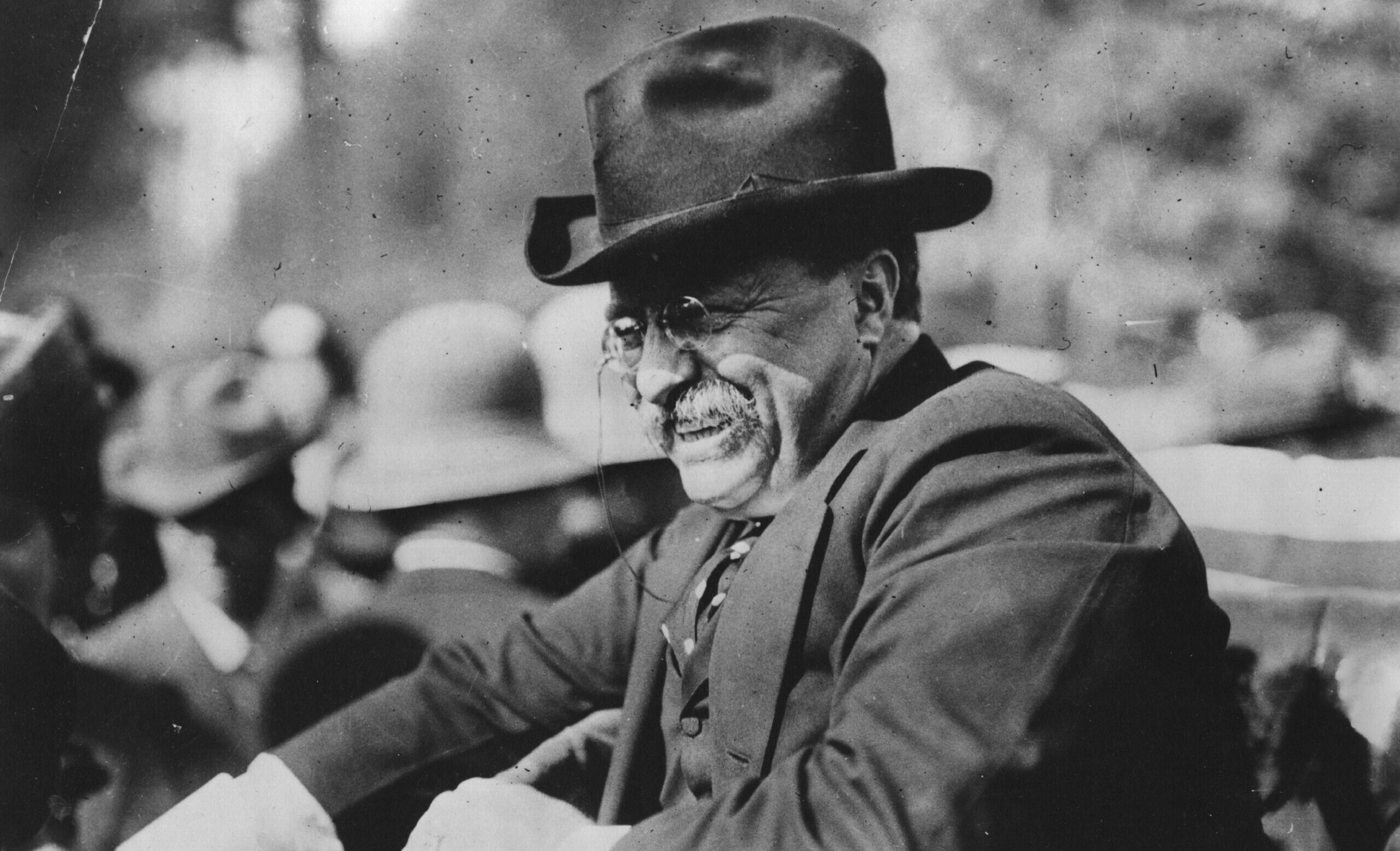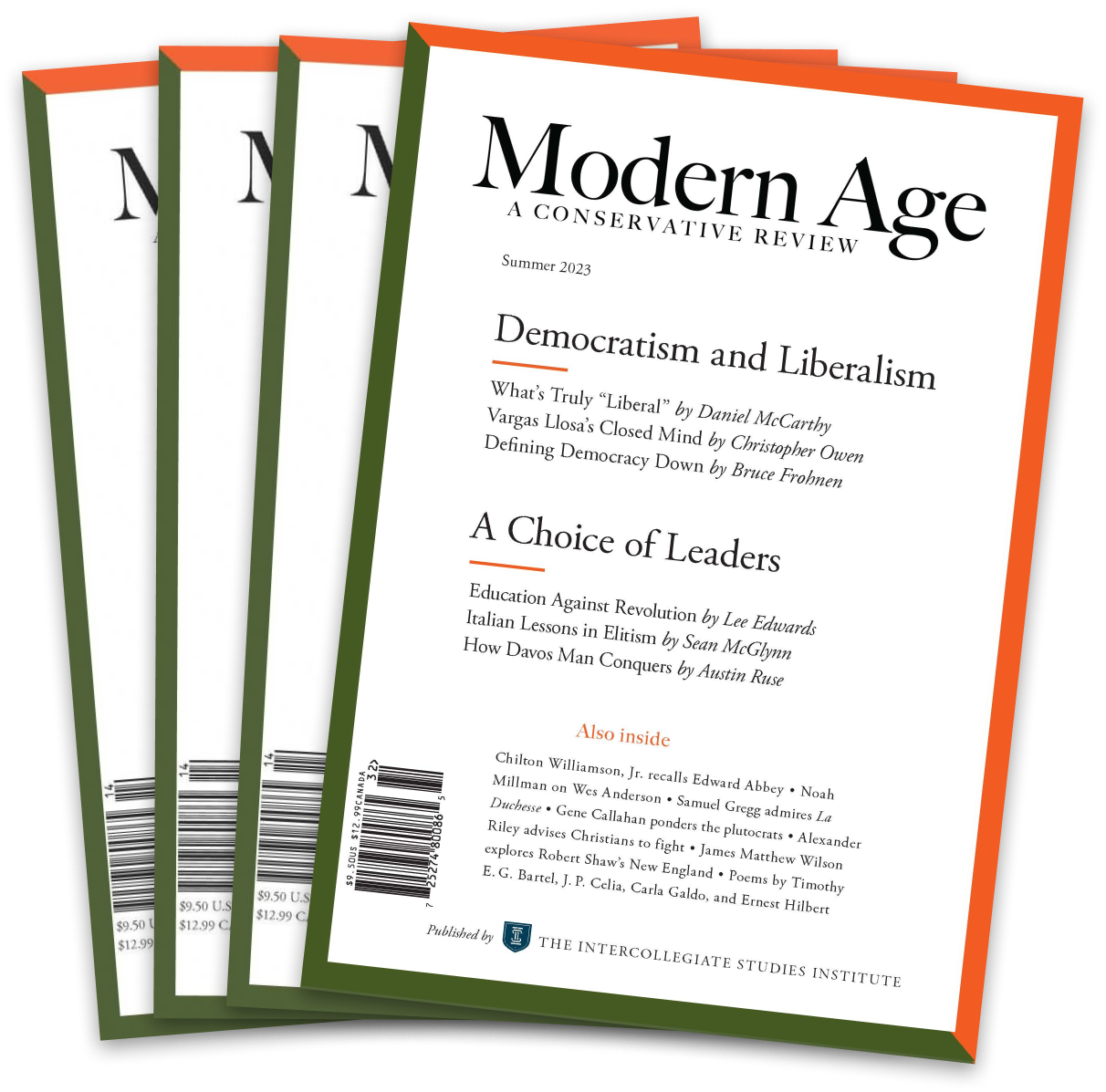Can new forms and bodies, brought before our eyes by technological development, change our conception of beauty? Years ago a historian and I discussed whether the “technization” of our world could change human sensory experience.
The historian was concerned by the “loss of cultural values,” as he and another historian, the late Johan Huizinga, called it. Today, he said, few things come out of the hands of craftsmen. Industrial production rarely tries to combine genuine beauty and technical purpose. The historian went on to praise the simple and true beauty of handmade tools, containers, furniture, and the like, which, he thought, originates from an ancient human sense of measure and finality. The centuries of individual craftsmanship had closed a circle between usefulness and beauty.
I was tempted to accept the challenging statement of this historian who looked at the realities of our age so mournfully. Of course, technological progress meant not always pleasant consequences. Yet is it legitimate to ask whether our world has become more or less beautiful under the impact of technology and science?
There can be little doubt as to the humble origins of technological production and design. They were awkward and ghastly. The shape of the first locomotives and automobiles, the first steamers and steel bridges offends our esthetic sense. People designing those new means of moving, crossing, and producing evidently did not care about a new age of forms. They simply set forth in their old ways, blueprinting for bare technical ends.
And engineers in those days probably never had a course in art appreciation. They did not care for the pragmatic values of eye-catching forms and surfaces. It took a long time before engineers acquired esthetic ambition. I think they would have developed a higher standard of esthetic design much later if the very nature of matter itself, the necessities of technological materials, had not forced them to consider streamlines and smooth, shining surfaces.
This leads to my thesis. It is man’s desire to thrust across land, sea, and through the air with a minimum of resistance—in other words, man’s longing for the utmost speed—that caused decisive changes in our system of esthetic values in engineering. We entered the age of streamlined technology. And, because of imitation, even technological fields, where streamlines are unnecessary, followed the general pattern. It is most unlikely that a fountain pen, a ballpen, a toaster, or a stroller become more effective if streamlined.
But if a man has to design a baby carriage, he may like to think himself an aviation engineer. In many cases the manufacturer—ordering a new gadget to be designed according to the latest lines of large-scale engineering—will cater to the fanciful attitudes of customers.
At any rate, I deem the streamline an esthetic contribution of technology. Imagine a visitor from the last century who would come to see our repertory of forms. The most impressive novelty to him would be the streamline. Means of transport in the air, on land and sea, projectiles, numerous ornamental forms, script used in advertising, all those structures carry one common character, the streamline. It is a pliant smooth form. It has the closed quietness of the circle, together with the momentousness and completeness of the ball, and it has the dynamics of the arrow.
Today, nobody can grow up without becoming accustomed to this new form element. Many toys are streamlined. There can be no doubt that every artist born in this century will absorb this form.
In vain one will look to illustrations of former ages and cultures. Nowhere, it seems, did they know the streamlined body. Of course, it would be very difficult to produce an ideal streamlined body with simple tools. There was, however, one craftsman who always knew the advantages of the streamline: Nature. This probably happened by way of natural selection. Those fishes survived which had the most speedy body. Clumsy animals were at a disadvantage.
Is nature the pool of archetypes for all esthetic forms? It is still controversial whether man can invent a completely pure and new form, not to be found anywhere in nature. In view of the manifold forms shown by crystals or, under the microscope, by diatoms and other organic structures, it seems rather doubtful. At least the human inventor of new forms has to meet a most efficient competition.
Simple geometric forms served as ornament in ancient times. For instance in the art of Mycenae, about 1600 B.C., possibly the uncomplicated geometric figure was the beginning of art. Some experts trace those basic elements of drawing like circle, sickle-shaped arc, spiral and straight line back to natural objects. The full moon, the sun, the web of a spider—they all showed the circle. The sickle of the moon and horns of animals provided the forms of the sickle and arc. Snails taught us the spiral. Other archetypes of bizarre forms are to be found in the skin of snakes, lizards, butterflies, but even the worms in wood caused by death-watch beetles, or whole shapes of animals, the skyline of a landscape, may have enticed the first artists. The art of China and Japan knows even to use the forms given by the array of a flock of flying birds.
It is man’s desire to thrust across land, sea, and through the air with a minimum of resistance—in other words, man’s longing for the utmost speed—that caused decisive changes in our system of esthetic values in engineering.
But there is another school of thought. Unlike the theory of the naturalists, it holds that the first ornaments derived from technological forms, created for definite purposes. Such forms are, for example, the wheel, the cross,—and now the streamline. Since it is not really preformed in nature it did not come to the human world till technological necessities called for it. In other words, it was not pure visual perception, as in the case of the sickle or spiral, which brought this form to our attention, but human thought in its most abstract activity, in theoretical reasoning about the most adequate form to meet certain problems of fast-moving objects.
The genetic interdependence of forms in nature, art, and technology is relatively unknown. It is no wonder that esthetics has not yet determined the sequence of values. I do not think, however, that we need to frown on forms of artistic expression even if they were first produced in the laboratory by profane engineers. The streamline is most pleasing to the eye. To me it is certainly an esthetic value. And since it came to many fields beyond its original physical place in technology, we may call it a symbol of our century.
The ornamental art of a preliterate fishing tribe might have had some chances to imitate the streamline, but I remember only some vague streamlined ornaments in Viking art. It was up to the twentieth century in its haste to lead the streamline out of the laboratories to all conceivable ways of application.
Of course, the streamline was not the work of a single genius. But are the other basic forms of art? We do not know how many generations it took before those ancient plates or vases acquired their high perfection, both in usefulness and beauty. There, too, technological necessities influenced the hand of the master.
One may find it typical of our technological age that blueprints of engineers contribute new forms of beauty. But this latest development of the Industrial Revolution is not unparalleled. There is another fact to be considered. It is quite obvious that twentieth-century art began to show streamlined features before the broad technological process of streamlined engineering got fully under way.
I remember a semi-abstract painting from the early twenties in which a human body in all details within some sort of room was built up solely by smaller and larger streamlined projectiles. Many zeppelins in different colors and sizes formed the picture. Or take Ernst Barlach. Many of his wood carvings are streamlined creatures. They look like anthropomorphized airplanes or racing cars.
It seems to me that approximately by 1905 Western art began to show a gradual change in esthetic qualifications which coincided with the origin of the streamline. In other words, at the same time when the physicists calculated a streamlined body—to meet demands of modern transport and ballistics—the artists, too, discovered new ways of sculpturing, drawing, and painting whereby the eye no longer is lost in a multitude of detail and curled forms. Now the premium is on compositions wherein the eye can wander along with a minimum of time. If one compares a Baroque painting with a Picasso, a Gothic wood carving with a wood carving by Ernst Barlach, the loss of multifarious forms and surfaces becomes obvious.
In former times it was a slow process to appreciate and analyze works of art. Today there is less richness of single forms. Much in modern art tends toward the streamlined ideal. Most of Ernst Barlach’s wood carvings, and those of more recent artists, resemble the contour of fast-flying streamlined vehicles. Barlach, usually counted among the expressionists, carved men and women, tucked in their coats, looking like victims of a storm, true expression of what Barlach anticipated our century to be. The tempests of this age will force man to become like his creatures, streamlined aircraft and rockets. Barlach, by the way, was also preoccupied with storms, and the shape of things and people in their path, as a writer. See, for instance, his essays and fragments titled “Sturm auf der Seine,” 1896; “Sturms Heimkehr,” 1897; and “Sturm,” 1912. Similar are Ewald Mataré’s animals in wood, cast iron, and bronze; for instance his “horse.”
Astoundingly streamlined shapes were used by Franz Marc even before World War I. Those unconscious anticipations of the streamlined age are more significant than artistic expression in streamlines since the thirties. Brancusi produced a marble fish, seventy-one inches long, in 1930. It is a perfect streamlined body. Also, Pevsner’s “Developable Column,” 1942, in brass and oxidized bronze, is a variation of the streamline. (Both sculptures are acquisitions of New York’s Museum of Modern Art.)
These dynamic and flowing forms in technology and art seem to announce a new, yet very general human attitude toward meeting our environment. Interesting, however, is this doubled necessity, both in technique and art. We do know why the physicist had to find the streamline. It is evident in plain mathematical formulas. Yet we do not know exactly why the mind of artists went the same way. I should like to venture an interpretation.
D. H. Lawrence considered the ecstasy of speed the main narcotic of twentieth-century man. We know that there are direct relations between perception and movements of our own body. That means, if we see a movement, our muscles, however slightly, tend to reproduce this movement immediately. It is for this reason, I think, that the creative patterns of artists came closer and closer to the streamline formula. Here the fine arts are only complying with the innermost drive of modern man. To comprehend a form which is adequate to our conception of the future means delight. The streamline reassures us of man’s most obvious victories, those over time and space.
To grasp conceptually a line, or series of lines, brings pleasure, especially if a motor activity which is in harmony with our own habitual way of acting or longing to act produced the line. The streamlined body entices the lust for infinite thrusting into the future. Thus the streamline is as much a token of our feeling as the architectural forms of earlier centuries represent the “subjective time” of their people.
The completed streamlined body is, on the one end like a ball, on the other it consists of the sharp silhouette of a pyramid. Is it not a suggestive symbol of the contemporary emotional dilemma? Is not much in our lives similar to the streamlined body? We are trying to push forward into the future with a head, overheavy of accumulated and well-designed things, whereas toward the past our roots are thinning out ever faster.
Friends of perfectionist technology could argue that when products of technology please esthetically, this must be an indication that human nature has adjusted to this kind of man-made world, perhaps much better than we think.
Creating in streamlines is the shorthand writing of the artist. Details, even limbs and parts of the body, are sacrificed in order to condense the entire shape in a single, quick, well-rounded curve of expression. The original human figure is fading away. A new type of nature, derived from technology, appears.
Henry Moore is certainly no lone wolf. Reports from exhibitions in West Germany indicate a similar movement to the “shorthand” sculpturing among younger artists. Basically, the American artistic tradition is much more based on technological forms than the European. However, it is interesting to note that the abstract artists in New York’s Greenwich Village tend to go beyond this world of forms suggested by advanced technology.
One can certainly question the future of the streamlined art. It may not have reached its climax yet. But one can already observe a change in the design of cars. Not all companies seem to believe that a car should have a “built-in forward motion” look. And the designer Raymond Loewy was criticized because he advocated, for example, a streamlined soft drink dispenser, though this machine hardly gets to supersonic speed.
While consumer surveys may convince manufacturers of the values of streamlined gadgets for some longer period, the possibilities of the streamline in creative art are much more limited. Ultimately it could lead to a barren art. The streamline is the final answer to one question: how does an object conform to speed? For art it is a blind alley. In the long run art needs a human basis which the rhythm of perfectionist technology cannot provide.
In 1924 Paul Klee concluded his speech about modern art with the tragic sentence: ‘‘We [the modern artists] still lack ultimate strength, for no people carries us.” Eventually, however, the familiarity of the common man with the streamlined objects of his daily life could influence his attitude toward unconventional art, especially in sculpture.
Helmut Schoeck was an Austrian-German sociologist and the author of Envy: A Theory of Social Behavior.














